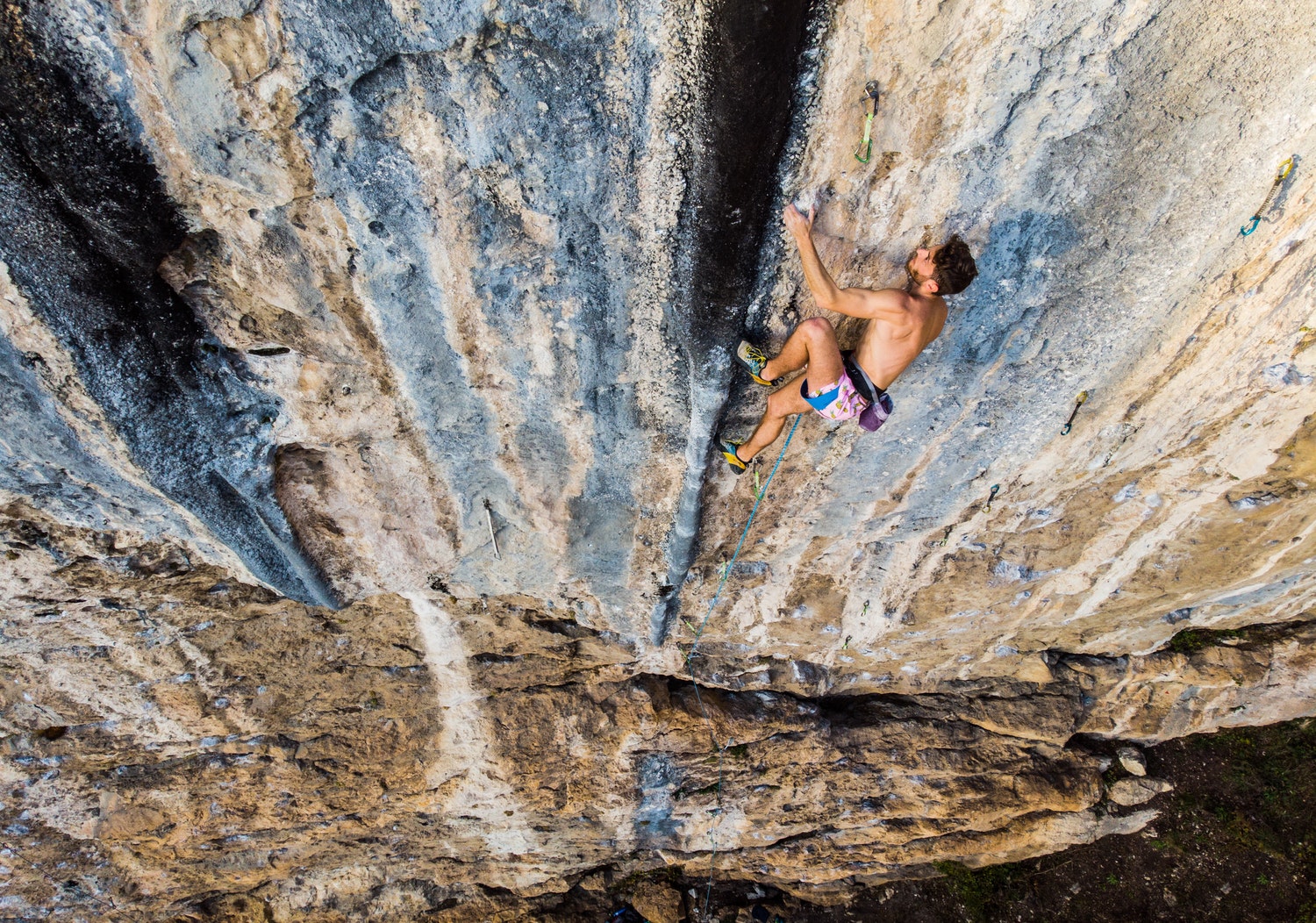Per go climbing, at least in crags that are also suitable for those who are gradually approaching climbing, i.e. equipped for single pitches with fixed anchors for belaying and rappelling, very few things are enough. L’climbing equipment we are talking about is not the one for mountaineering routes or even the one for multipitch routes but only what is necessary to go climbing on natural rock walls a maximum of 30 meters high. Few things, techniques and to be chosen carefully, which can cost a maximum of a few hundred euros in all.
What you need to go climbing
L’climbing equipment it is (relatively) inexpensive, certainly less than that required for mountaineering and often also for practicing other mountain activities. However before you think about what it takes to go climbing it is important to really understand that your safety, as well as fun, depends on the equipment: therefore choose only climbing equipment that is approved UIAA (International Union of Mountaineering Associations) e CEN (European Committee for Standardization), and usually that of the best brands is, and first of all learn how to use it by following a course with the Guide Alpine. Indeed, a good idea to start climbing is to take lessons and in the meantime use rental equipment, to get to know and understand the differences between the different models, and only when you have a certain awareness proceed with the purchase; to start climbing you can also read our other tips.
To go climbing you need:
- Corda
- Shoes
- Harness
- Brake
- Referrals
- Casco
- Bag with chalk
Rope to go climbing
It is the first safety device in climbing, and all types of rope consist of an inner core and a sheath: here we explain them well and in detail. However, for the first few times, a 70m, 9.8mm diameter rope is just fine. There will certainly be time for the more technical ones.
Shoes for climbing
A world opens up on climbing shoes: here we have explained how to choose climbing shoes and in general, if these are your first time climbing, forget about the rigid and arched top models, and also the idea that the climbing shoe must necessarily be of at least a couple of sizes lower than your usual shoes. There are cimbing shoes for beginners that are soft, flexible and comfortable. Above all, make sure that they adhere well to the foot: there are some with a more or less wide sole, with a more or less high upper and everyone must find the one that wraps their foot well.
Climbing harness
The harness is the device that slips on the waist and on the legs and which allows you to secure yourself to the rope. Also d climbing harnesses there are different models and prices and also in this case the priority must be comfort: the important thing is to choose the right size (yes, harnesses have sizes) and at the beginning focus on lightness and comfort. The more advanced models, for example with the adjustment of the leg loops, will come later.
Brake for climbing
Together with the rope and harness the brake for climbing it is a fundamental safety device. The important thing to know is that there are essentially two types: self-lockingi.e. which automatically block the rope in the event of a sudden pull, e not self-locking, which therefore presuppose the intervention of the partner who is providing assistance. No, one is absolutely safer than the other, although self-locking devices are now the most widespread, and yes, it is always essential to pay continuous and scrupulous attention: this is the only way to prevent accidents.
Return to climb
I quickdraws for climbing are those pairs of carabiners joined by a fabric ribbon which serve to connect the rope to the fixed protections (bolts, fixes or taproots) as you proceed in the ascent. How many are needed? It depends on the length of the pitch and the number of fixed protections but for a cliff of about thirty metres, a dozen or fifteen could be needed.
Helmet for climbing
Even the climbing helmet it is an essential device for safety, both in the case of impacts (less probable) and of falling material from above (more probable). It is essential that it is EN 12492 certified for protection in mountain sports (you should find the wording inside, together with the label) and as advice it is preferable, at the beginning, to focus on comfortable, light and well-ventilated helmets. It should also be known that climbing helmets have sizes, which depend on the circumference of the head.
Before going to the crag, you can familiarize yourself with the terms of climbing with our climbing guide from A to Z or approach this sport in one of the indoor climbing gyms like these.
Credits photo: Image by Pete Linforth from Pixabay
Advertising
